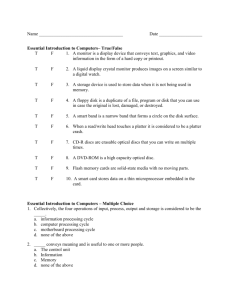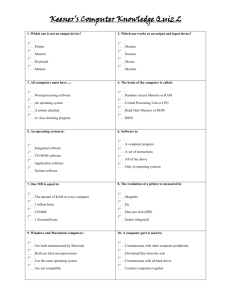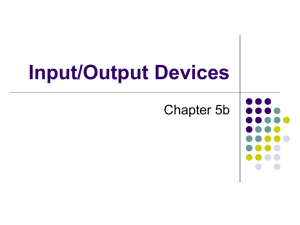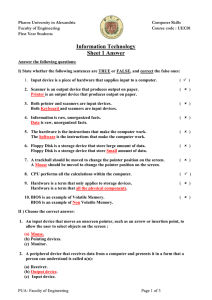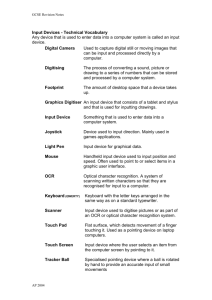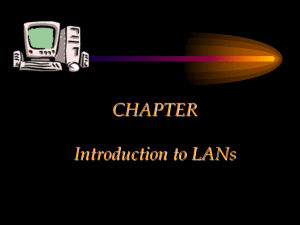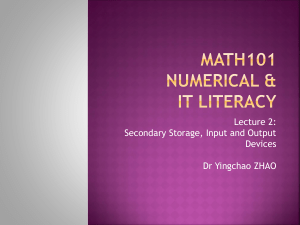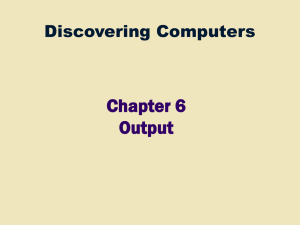Document
advertisement
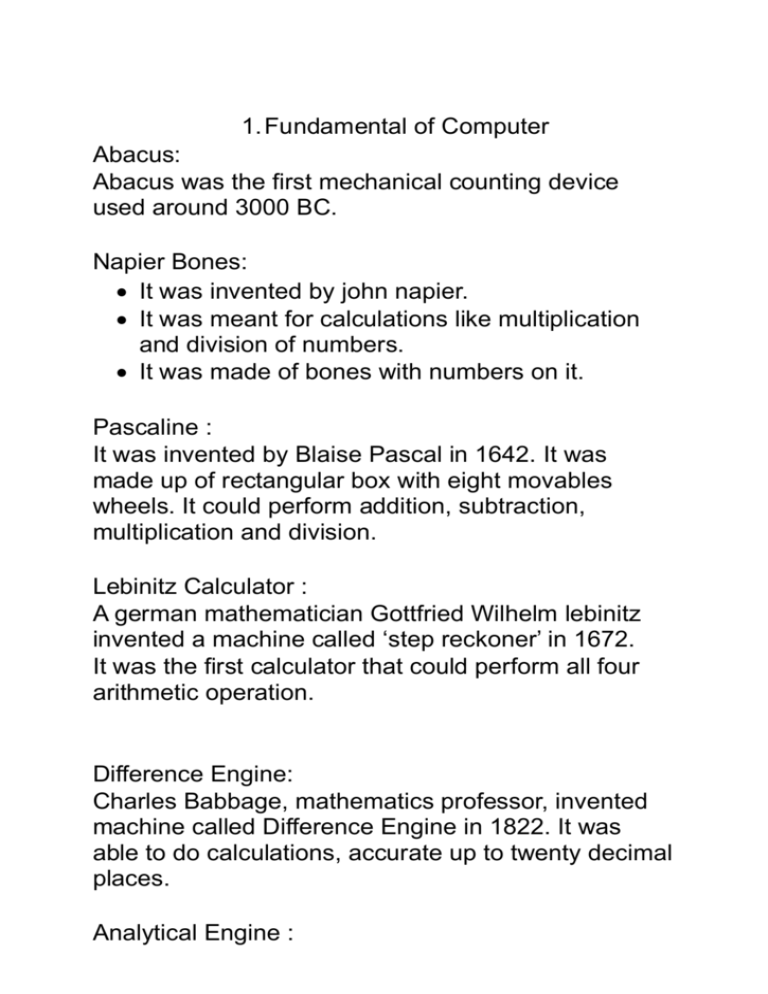
1. Fundamental of Computer Abacus: Abacus was the first mechanical counting device used around 3000 BC. Napier Bones: It was invented by john napier. It was meant for calculations like multiplication and division of numbers. It was made of bones with numbers on it. Pascaline : It was invented by Blaise Pascal in 1642. It was made up of rectangular box with eight movables wheels. It could perform addition, subtraction, multiplication and division. Lebinitz Calculator : A german mathematician Gottfried Wilhelm lebinitz invented a machine called ‘step reckoner’ in 1672. It was the first calculator that could perform all four arithmetic operation. Difference Engine: Charles Babbage, mathematics professor, invented machine called Difference Engine in 1822. It was able to do calculations, accurate up to twenty decimal places. Analytical Engine : It was the first general computer designed by Charles babbage. It has the same feature as modern computer has. i.e. Input, Process, Output, Storage So Charles babbage is called the father of the computer. Mark – I : It was first electro mechanical computer developed in 1944. ENIAC (Electronic Numerical Integrator And Computer): It was the first full electronic digital computer developed in 1946. It used 18000 vacuum tubes and occupied 1800 square feet area and performed 5000 additions/ second. BASIC COMPONENTS OF COMPUTER A. Input Unit: The input unit is used for entering data or instruction in to the computer. b. Storage Unit: The storage unit is used for storing data and instructions before and after processing. c. Output Unit: The output unit is used for storing the result as output produced by the computer after processing. d. Processing: All processing and control of computer done in processing unit There are three parts in processing unit. Arithmetic Logic Unit, Control Unit & Memory unit ============================================================================ Different I/O Devices : Input Devices An input device is any device that provides input to a computer. • Keyboard: • Mouse: • Trackball: • Touchpad: • Light Pen: • Magnetic ink character recognition (MICR): • Optical mark recognition (OMR): • Bar code reader Scanner Web camera Micro phone Output Devices: Output device receives information from the CPU and presents it to the user in the desired from. The output is usually produced in one of the two ways – on the display device (Softcopy) , or on paper (hard copy). •Monitor, Printer, Speakers, Plotters ===================================================================== Computer Languages Computer language or programming language is a coded syntax used by computer programmers to communicate with a computer. 1. Machine language 2. Assembly language 3. High level language Machine Language Machine language is the native language directly understood by the computer’s central processing unit or CPU. This type of computer language is not easy to understand. Assembly Level Language Assembly Level Language is a set of codes that can run directly on the computer’s processor. This type of language is most appropriate in writing operating systems and maintaining desktop applications. High Level Language High Level Languages are user-friendly languages which are similar to English with vocabulary of words and symbols. These are easier to learn and require less time to write. =============================================== Software definition and its types: Computer software is the set of programs that makes the hardware perform a set of tasks in particular order. Computer software is classified into two broad categories; system software and application software. System Software: System software consists of a group of programs that control the operations of a computer functions MS DOS (Microsoft’s Disk Operating System), UNIX, LINUX. Windows XP, Windows 8 are examples of system software. Application software: Software that can perform a specific task for the user. Word processors, spreadsheets, database management systems are all examples of general purpose application software. ======================================================= Computer Memory : Computer’s memory can be classified into two types; primary memory and secondary memory a. Primary Memory It can be further classified as RAM and ROM. • RAM or Random Access Memory is the unit in a computer system It is said to be ‘volatile’. The contents of RAM are no more available once the computer is turned off. ROM or Read Only Memory is a special type of memory which can only be read and contents of which are not lost even when the computer is switched off. b. Secondary Memory Secondary/auxiliary memory includes devices that are permanent storage of programs and data. • Hard Disk • Compact Disk (CD) • Digital Video Disk (DVD) is similar to a CD but has larger storage capacity and enormous clarity. Other storage devices are Pen drive, Zip drive, Floppy Disk, Magnetic Tape, Memory Card etc. =================================== Different types of Printers Printer - A device that prints text or illustrations on paper. There are many different types of printers. Dot matrix: A type of impact printer that produces characters and illustrations by striking pins against an ink ribbon to print closely spaced dots in the appropriate shape. They do not produce high-quality output. Ink-jet: A type of printer that works by spraying ionized ink at a sheet of paper. Ink-jet printers are capable of producing high quality print approaching that produced by laser printers. they are especially popular as portable printers Laser: A type of printer that utilizes a laser beam to produce an image on a drum. Printer quality is good and high speed printer.
